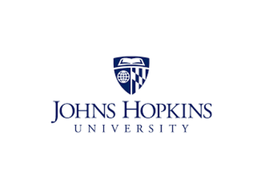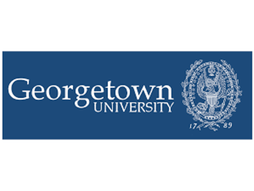NASA's App Development Challenge - 8 Tips to Help You Win
Coding and app development are two core skills that are quite literally building the world today. High school is the perfect time to start chipping away at mastering these skills. What better way to test your skills than to participate in competitions? w
There are a lot of great coding competitions for high schoolers.
Today’s blog post focuses on a programming competition hosted by NASA - the App Development Challenge, or ADC as it’s commonly known.
What is NASA’s App Development Challenge?
Established as part of NASA's Artemis Student Challenges, the ADC is a call to action for students to engage in real-world problem-solving, directly contributing to NASA's Artemis missions. These missions aim to land the first woman and first person of color on the moon’s south pole and to develop a sustained human presence on the moon. The ADC is modeled on actual challenges faced by NASA's Space Communications and Navigation (SCaN) program, which is integral to over 100 NASA missions.
NASA’s ADC is a virtual 10-week app development competition that challenges teams of middle and high school students to create an app to “visualize the South Pole region of the Moon utilizing lunar terrain data and display essential information for navigation and communication”.
Who is eligible for the ADC?
To be able to enroll for the ADC, you must:
Form a team of at least 5 students and 1 lead teacher.
Be in grades 9-12 (for the high school path) or grades 5-8 (for the middle school path) during the 2023-24 school year (applies to ALL team members).
Be part of a formal or informal US educational organization.
Have a signed letter of support from the principal or administrator of your organization.
If your team qualifies to be invited to the final event at NASA’s Johnson Space Center in Houston, then the 5 students traveling must be US citizens.
How is the ADC structured?
The App Development Challenge is spread out over the following dates:
September 27 - STEM Gateway Registration closes for the 2023-24 challenge. Lead Teachers must register their teams in the NASA STEM Gateway before this date.
October 4 - Live virtual kickoff event, where the competition officially begins. This is when the Lunar Data Files and Lunar Surface Texture images are made available to all teams.
October 11 - NASA hosts the next Live Virtual Connection event on creating a 3D mesh for developing the app.
November 8 - The next Live Virtual Connection takes place, this time on wayfinding and calculations.
November 29 - The final Live Virtual Connection, in which student teams are interviewed.
December 13 - Submission deadline for the app development video comprising of:
An introductory statement, including the language used to create the app (Java, C, C++, Scratch, etc).
Your app components must be fully described - how it’s visualizing height, slope, elevation angle, azimuth angle, using color to convey information, the algorithm for displaying a path, placement of communication links, selection of landing and destination sites, and any other features you were able to add.
Description of obstacles and how they were overcome during the development process.
Key skills learned.
How were subject matter experts and mentors used during app development.
Any community events held or planned by your team.
February 1-15 - Selected Top Teams will be interviewed by the NASA SCaN team for qualification to the main event.
February 28 - Top teams finalized.
April 15-18 - NASA ADC Culminating Event, where Top Teams will be invited to the Johnson Space Center to interact with NASA personnel and industry leaders!
You and your team will have access to various data files, including latitude, longitude, height, and slope data in a gridded geospatial polar stereographic projection format. These files are essential for creating the 3D visualization of the lunar surface. An example lunar regolith surface texture is also provided to assist you in developing a more realistic representation.
Rewards on offer
Winners (typically 3 teams) will be invited to tour NASA's Johnson Space Center. This is an excellent opportunity for you to see your work recognized at a national level and to gain insights into the workings of NASA.
Is NASA’s App Development Challenge prestigious?
The ADC is one of the most prestigious coding challenges in the country. The primary driver of this prestige is the fact that it’s hosted by NASA for their next significant space exploration mission. Teams from across the country apply, because of the open registration and virtual nature of the challenge. Importantly though, the intensity and rigor of the competition are significant - your app is going to be held to a sky-high standard and will have to intuitively interpret and display complex geographic data. All of this means that qualifying for, competing in, and especially winning the ADC is one of the most powerful testaments to your programming skills that you can have.
8 tips to help you win
The Handbook is your best friend: NASA’s ADC Handbook has pretty much everything you need to know, from competition rules to a massive list of resources, to the evaluation rubric and even the key mathematical equations you need to know. We’re not joking when we say that you need to know the Handbook like the back of your hand if you want to succeed.
Don’t neglect the UI (User Interface): Much of the judgment criteria focuses on how well your app is able to process and convey the geographical information to a user, which of course requires well-developed back-end code but also a clear, coherent UI design. For example, one winning team in 2023 used a 3rd person viewpoint of a rover and included a 3D bird’s eye view!
Specialize and synergize: The ADC is a highly complex challenge that no single person can manage on their own. Divide the responsibilities between teammates, with say one focusing on the data processing aspect, another on UI, a third on calculations, etc. Learn from each other and bring your unique strengths to the fore.
Learn from others: Investigate past ADC projects and current NASA challenges to inspire innovative solutions. Even more importantly, work with mentors and teachers in your school or a nearby university for an even better chance at success. Not only will they improve your knowledge and guide your efforts, but the very approach of working with mentors will add points to your final score.
Work backward from the goal: NASA thoroughly describes the output they expect from ADC participants. Spend time with your team and mentor(s) to strategically pen down each and every aspect of the app you plan to develop, then work backward from there in making it come to life. While this is a more intensive and time-consuming approach, it also compromises the least on quality, increasing your chances of winning.
Debug and refine constantly: The ADC is a 10-week marathon, and there is not a single day that you should be spending without improving or debugging your app. The complexity and volume of the data involved pretty much guarantee that your code will break easily and often, be prepared for that.
Tell a compelling story: Craft a clear and persuasive video submission to showcase your app to NASA, as it’s a significant part of your final score. Utilize screen capture tools and some basic video editing software to make your presentation engaging and coherent.
Keep your spirits up: Don’t forget to enjoy yourselves! You and your team are solving a real challenge keeping the nation’s top scientists and programmers awake at night - acknowledge that and let it be a motivating factor for you. Staying calm and motivated will be as critical to your success as your coding skills.
Embarking on the NASA ADC is an opportunity to be at the forefront of space exploration. Follow these tips and you may just be one of the lucky few to influence and meaningfully contribute to humanity’s forays in space. So, take these insights, ignite your creativity, and you may just find yourself among the stars. Good luck, and may your coding journey be stellar!
If you’re looking to build a project/research paper in the field of AI & ML, consider applying to Veritas AI!
Veritas AI is founded by Harvard graduate students. Through the programs, you get a chance to work 1-1 with mentors from universities like Harvard, Stanford, MIT, and more to create unique, personalized projects. In the past year, we had over 1000 students learn AI & ML with us. You can apply here!
If you’d like to supplement your competitive experience with independent research, consider applying to Horizon’s Research Seminars and Labs!
This is a selective virtual research program that lets you engage in advanced research and develop a research paper on a subject of your choosing. Horizon has worked with 1000+ high school students so far and offers 600+ research specializations for you to choose from.
You can find the application link here
Lumiere Research Scholar Program
If you’re looking for the opportunity to do in-depth research on various topics in STEM or programming, you could also consider applying to one of the Lumiere Research Scholar Programs, selective online high school programs for students I founded with researchers at Harvard and Oxford. Last year, we had over 4000 students apply for 500 spots in the program! You can find the application form here.
Stephen is one of the founders of Lumiere and a Harvard College graduate. He founded Lumiere as a PhD student at Harvard Business School. Lumiere is a selective research program where students work 1-1 with a research mentor to develop an independent research paper.
Image Source: NASA logo










